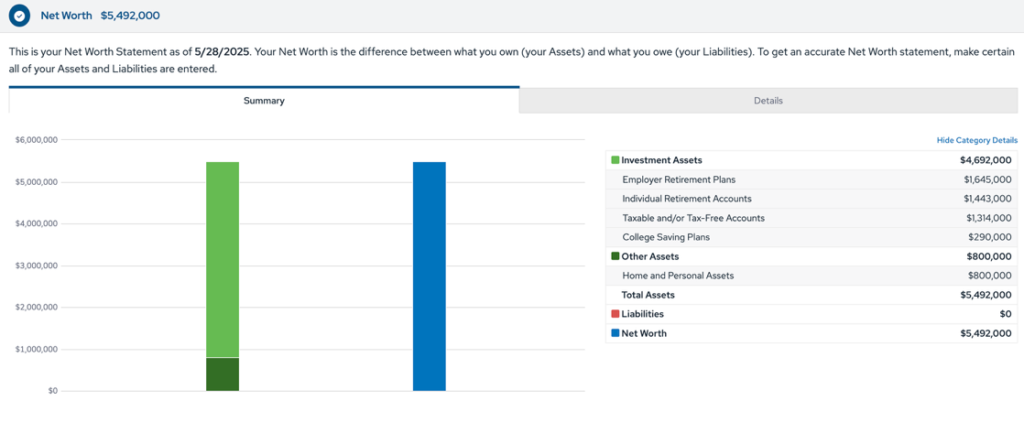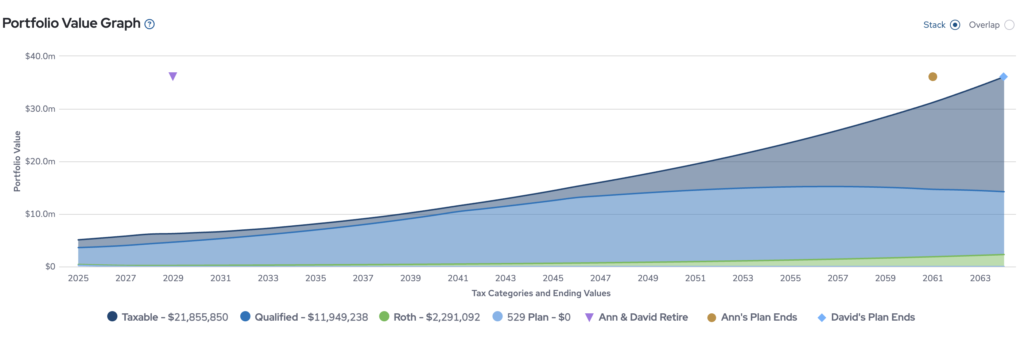Wrapping Up May with Some Lasting Thoughts
School’s out for summer as Brent finished teaching the financial planning capstone class at the University of Cincinnati. Over the course of a semester, the students are exposed to a series of fictional case studies, lectures on key retirement, investment, tax, estate, and insurance concepts, and prepared to take next steps entering the financial planning industry.
In our practice, we believe that the value of a financial plan is not a point-in-time plan. The process of building a plan and using the data to guide decisions along your financial path is ultimately an exercise to help clients reflect and adjust behavior over time, making sure that we can visualize out in the future to try to be more purposeful today. Of course, the plan also allows us to optimize for various elements like investments, taxes, and estate planning (and these things are important to focus on), but as time goes on it becomes clear that the real value is helping clients be more intentional and live a more fulfilling life with their money.
One case study from class is the Chen family financial plan, which highlights an important part of a financial planner’s role, helping clients with managing their money and emotions.
In the case, Ann and David are in their mid-50’s and have done a great job of saving money. They have three kids of roughly college age, and Ann has parents who live internationally. Due to their frugality and having dual incomes, they’ve managed to save almost 4.7 million dollars. Ann is stressed at work and wants to retire to spend more time with her parents overseas, but David is concerned about their ability to retire after watching his parents run out of money. This difference is causing stress and conflict in their marriage.
In class, the students are broken up into groups and each group is asked to make some recommendations.
Inevitably, they all face the question: Do you think the Chen’s can retire?
To get to an answer, the first step is to build out a financial plan to help visualize and track the information. During this process, data such as client ages, expenses and income sources, assets and liabilities, tax, insurance, and estate information. With this data, we can start modeling the viability of the plan and measuring, given historical data, how likely the Chen’s are to run out of money.
Here are the key assumptions in the plan:
- Investment returns of 6.5%/year and inflation of 2.5%/year
- Ann and David are 57 and 52
- Ann makes 264k/year, David makes 65k. They save roughly 30% of their income between retirement accounts and other investments.
- They have three children, ages 19 to 15
- Ann’s parents are in their early 80’s and live overseas
- Ann is eager to retire sooner than later for several reasons but has always planned to work until 62. David will retire at the same time at 57.
- They are frugal, estimating their spending at roughly 100k/year. They also hope to cover college for each of the children for almost 90k/year, and they want to be able to travel in retirement to see Ann’s parents.
- Both Ann and David are eligible for social security.
- They have roughly 4.7M saved and own their house outright.
Their net worth is broken down as follows:
So, can the Chen’s retire in 5 years as planned with their current goals? Well, it turns out that after spending hundreds of thousands of dollars to get kids through college, they are still tracking to have over 6 million in investment assets by the time they retire at 62. If they stick to their planned spending of roughly 100k/year in today’s dollars, their money is set to continue to grow through retirement, exceeding 10 million by the time they are in their 70’s and on and on until they pass away with roughly 34 million to leave to their children and grandchildren.
Now, of course, if you had 10 million dollars in your 70’s, do you think they might spend more than what they originally expected? Maybe that is a good thing, but that doesn’t truly account for the various options that the Chens face today and is a reactive approach.
Given their strong financial position, they could make a few changes such as:
- Spend more in retirement, though they’ve trained themselves to be frugal, and increasing spending when you are trained to save can be easier said than done.
- Retire sooner to allow Ann to spend more time with her parents.
- Reduce their investment risk and have more peace of mind when the market gets volatile.
- They can strategically leave more money to their kids and grandkids.
- Or they can do a combination of these things!
In fact, they could retire now given the assumptions in the plan and still are on track to pass away with 26 million dollars.
So why is the couple stressed and fighting over money and when to retire?
This situation represents many of our clients who have trained themselves to be successful savers and investors over time, taking pride in their financial wherewithal. It highlights one of the most important roles of a financial advisor – helping clients be more intentional with their money. While it is not the role of an advisor to tell you what your purpose is, it is part of the job to help hold up a mirror to help clients reflect and ask deeper questions about what their true definition of “success” is and how the money can be the means to that ends.
At the end of the day, money is a tool, not a trophy.

Thanks For Reading! We Hope To See You Again!
For More Updates:
Advisory services offered through National Wealth Management Group, LLC, a Registered Investment Adviser. This information is intended for educational purposes and is not intended as a recommendation to buy or sell securities. Investing involves risk. Before investing, you should consult with a financial advisor to determine how a specific investment strategy fits your personal goals and objectives.





